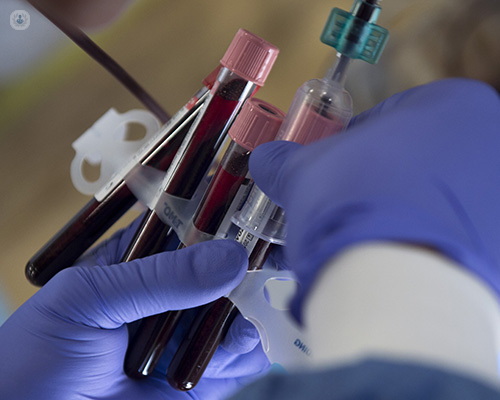What are blood platelets and why is a normal platelet count important?
Written by:Blood is crucial to the functioning of the human body. It is formed of three components: plasma, which carries proteins, sugars, salts and hormones necessary for life, and three types of cells: red blood cells, white blood cells, and platelets.
What are platelets?
Blood platelets are portions of a larger cell, called a megakaryocyte (a large bone marrow cell). Each megakaryocyte, upon fragmentation, produces hundreds of platelets that pass into the blood. These, having no nucleus, cannot be divided or reproduced. They usually last for about nine days in the bloodstream. There are continually small breaks in blood vessels that are plugged by our platelets. They have the ability to detect a ruptured or injured blood vessel and fix them, helping to stop the bleeding immediately. Hence, they help to initiate blood clotting and control bleeding. According to haematologists, platelets are indispensable to ensure the integrity of blood circulation and also play the crucial role of stopping bleeding.
So, what is a normal blood platelet count?
A normal platelet count is between 120,000 and 400,000 per microlitre of blood. Generally, it will need to be investigated if the platelet count is consistently less than 100,000 or greater than 500,000.
Problems associated with platelets
There are three types of problems associated with blood platelets:
- Thrombocytopenia (fewer platelets than normal)
This is the most frequent problem, however, most of the time it does not have repercussions because, although there are fewer platelets, they are still able to ensure correct haemostasis (normal blood circulation without bleeding). If you have low blood platelets, the patient will likely have cardiac problems and haemorrhages.
- Thrombocytosis (more platelets than normal)
An increased platelet count is a physiological defence mechanism in cases of inflammation and infection. If you have high blood platelets, there is an increased risk of blood clotting and thromboses forming. The clearest example of this problem occurs in a blood disease called essential thrombocythaemia (ET). Patients with ET have too many platelets in their blood and they may have two to five times more platelets than usual. Another frequent cause of high platelets can be an underlying medical problem, such as having an iron deficiency, cancer haemolytic anaemia or an infection. This form of thrombocytosis is called reactive thrombocytosis and requires treating the underlying problem.
- Thrombocytopathy (poorly functioning platelets)
Although blood platelet levels may be normal, this group of blood disorders is characterised by dysfunctional platelets. As a result, there is a tendency for prolonged bleeding, problems with clotting and an increased risk for haemorrhaging. These blood disorders can be inherited, but they can also be acquired. A common cause of temporary platelet dysfunction is the use of certain drugs (e.g. aspirin, antihistamines or tricyclic antidepressants). Drugs may have been administered intentionally to improve circulation or to prevent thromboses, or it might be an adverse drug reaction. Inherited thrombocytopathy is usually treated with blood transfusions, but acquired thrombocytopathy focuses on treating the underlying cause.



